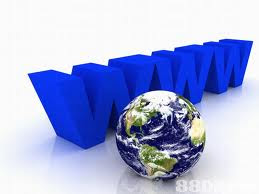Hi asalamualaikum, below is the last topic of this second
trimester which is about “WEB APPLICATION”. I would like to thank ALLAH for
giving me the health throughout the whole of this trimester. Enabling me to
complete it with understanding with the help of my beautiful lecturer Miss
Nisha. God bless for your time and devotion you gave to us. THANK YOU.
 WEB APPLICATION: It refers to any application, services in
internet and it examples are Google document, Windows Live Hotmail, Turbo Tax
online......and so on. As we learnt in Internet Web browsers are software
application that allow users to retrieve data and interact with content located
on web pages within a website and it examples are internet Explorer, Netscape. Mozilla
Firefox, Safari, Opera mini...
WEB APPLICATION: It refers to any application, services in
internet and it examples are Google document, Windows Live Hotmail, Turbo Tax
online......and so on. As we learnt in Internet Web browsers are software
application that allow users to retrieve data and interact with content located
on web pages within a website and it examples are internet Explorer, Netscape. Mozilla
Firefox, Safari, Opera mini...
Web applications are commonly used as combination of Script
and Client and Server. If they are together then that becomes Web application.
Web pages and types of Web: Web document and HTML (Hypertext
Markup Language) are Web page.
Static web and Dynamic web page are types of page. In the
internet treated about HTML and I would talking about is
Static is a read only
web which allows users to search for information and read it... Example. Web
1.0
Dynamic Web is a web for interaction between people, software.
Example: web 2.0 and 3.0.
GENERATION OF WEB: It is information displayed on web page
as static content, closed external editing(users are not allow to
contribute).It has hyper-linking of the web-pages and bookmarking were two of
the most important aspect of web 1.0 and it is in the html coding examples
information website, educational web, company website.
GENERATION Of WEB 2: Web 2.0 is the popular term for
advances internet technology and applications which allows user to interact
with information. It allows users to edit his information on blog, post, comment
and share individual information. Examples of the software use are adobe
reader, oracle java, window media....etc.
GENERATION OF WEB 3: Web 3.0 is about semantic web, based on
intelligent web application using Machine-based learning and reasoning
Intelligent
applications example DSS, ESP.
Web 2,0 site has two categories online social network and
mash ups and aggregation .We all know social network allow people to meet and
communicate
With each other in the form politics, games and so on.
Aggregation as we all know sum of all things. Which means?
Is a web site that mix different content from other web
sites to
Create a new kind of content. Examples include
Data, video, social, search, news aggregators.
Information technologies and applications.
XML and AJAX are the examples of programming language used
in Web application.
Programming language is a set of words. Abbreviations and
symbols that enables programmer to
Communicate the instructions to a computer.
The programmer is
divided into two parts
Low level language (machine language-1 generation PL and
assembly language-2 generation PL))
High level language (there are first, second, third
generation PL)
It is binary number that is 0 and 1 or combination numbers
and letters that represent binary digits.
Third languages as we all know are the first to use true
English-like phrasing, making easier to use than the previous languages. It is
also known as Procedural languages and they are
FORTAN C
COBOL C++
BASIC
Pascal AchiveX
Fourth generation is non-procedural languages. It uses
graphical tools and the language
Visual Basic
Visual Age
Fifth generation is Object-oriented and Web development
tools. Examples: Prolog. AJAX, JAVA Sprit. It functions were explained in notes
which I understood very well.
XML: External Markup language (Markup language for Web
Documents (2.0) which includes words and pictures (chapter hard ware, topic
input device) html hardware and input device.
Under the Web 2.0 we
have Tagged, Blog, Wiki....
RSS 2.0 and broadcasting and video casting are all under Web
2.0 IT
Google Application: series of application from Google Messaging, Calendaring, Documents, Video, Sites, Talk
And maps and all of it function were stated and I understood
them very well.










